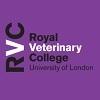Explore all the information on
Swine welfare
Some farming methods have ignored the pigs’ needs by treating them as production units rather than fascinating and intelligent creatures with innate behavioural and physical needs.
Pigs are sensitive to extremes of climate and have no sweat glands (except for on the tip of the snout) nor thick hair cover, relying on fat for insulation. In cold weather pigs often huddle to keep warm, whilst in warm weather they wallow in water and mud to keep cool. Pigs forage and root for food (a strong natural behaviour), and eat a wide range of vegetables and animal products, including carrion. In terms of senses, pigs rely on smell and hearing more than vision. They have a wide range of vocalisations and a good ability to locate odour sources.
Pigs prefer to live in stable families or small groups. However, they can be aggressive to each other, especially if unfamiliar animals are mixed. Boars are often solitary. Contrary to popular belief, pigs are clean animals and if given properly designed living accommodation, will always tend to use one particular area for dunging, thereby keeping their lying/sleeping area clean.
Background Directive 91/630/EEC sets the minimum standards for the protection of pigs in the EU. It has been substantially amended several times. Directive 2008/120/EC [1] collates the existing legislation into one document. The most important items in this Directive in relation to the welfare of pregnant sows pertain to the necessity of group housing from 4 weeks after service to one week before expected farrowing, available space, floor characteristics, handling of diseased...
Comments : 0
Recommendations: 0
The newborn piglet is challenged in many ways. It has to keep warm, find food and keep bacteria away. These particular challenges are the reason why piglets are not surviving or getting off to a bad start. Stalosan F dries the piglet and reduces the harmful bacteria and therefore a strategic use around birth is worth trying. The skin as barrier Stalosan F has a pH level around 4 corresponding to the pH level of the skin. It means...
Comments : 2
Recommendations: 4
Introduction
Weaning pigs from the sow is one of the most stressful events in the pig’s life that can contribute to intestinal and immune system dysfunctions that result in reduced pig health, growth, and feed intake, particularly during the first week after weaning. Technological improvements in housing, nutrition, health, and management have been used to...
Comments : 1
Recommendations: 4
For many years Stalosan F has turned out to be a very useable agent for reducing the consumption of antibiotics and lowering the mortality in e.g. pig herds. In trials with Stalosan F the significant reduction in medicine use is recorded. For instance, this could be observed in a research project conducted by QAF Meat Industries Pty. Ltd in 2007. Two groups of piglets were part of the trial during a period of 26 days until weaning. In the trial the basic parameters in form of...
Comments : 0
Recommendations: 0


Unlock Profitable Growth and Optimize Piglet Weaning with Effective Strategies
Suggested link
Veterinary Doctor Dominique Marchand discusses the challenges and opportunities that arise from antibiotic reduction in swine in Europe, during Eurotier 2016, in Hannover, Germany....
Comments : 0
Recommendations: 1
Plamen Nikolov, Technical Manager-Stalosan at Vilofoss, talks to us about their product Stalosan and their biosecurity assessment program during Eurotier 2016, in Hannover, Germany....
Comments : 0
Recommendations: 1
Fabio Catunda, Global Swine Manager for Pihleo Lesaffre , speaks to us about antibiotic reduction in swine during Eurotier 2016, in Hannover, Germany....
Comments : 0
Recommendations: 0
Introduction Investment in nursery and grow-finish facilities represents the most capital-intensive portion of modern pork production systems. It also is the investment most likely to have the lowest asset turnover ratio as a measure of financial return to investment. Thus, the decision on how many pigs to stock a facility with has major economic impacts. Not only must a decision be made regarding the number of pigs to...
Comments : 0
Recommendations: 0
INTRODUCTION Pig production around the globe has become very sophisticated with well-controlled environments that, if controlled properly, maximize animal well-being and production efficiency. The major thermal challenge in pig housing is economical mitigation of heat stress. Unlike cold weather periods where relatively inexpensive heating devices can be used to optimize thermal conditions, mechanical...
Comments : 0
Recommendations: 0
In a sector aiming at standardizing the final product at the maximum, variability in pig weight at slaughter age is still one of the major issues in the swine industry nowadays. Why is pig weight variability important? – The world as a distribution and not an average Producers often talk in terms of weight average, treating a batch as if it was a single animal. Consequently, the batch...
Comments : 7
Recommendations: 0
“Moving To Gestation Pens”
By: Paul Walker Thompson
January 1, 2016
Are you thinking of putting in some gestation pens? Due to Animal Welfare Groups and Consumer Pressure, many Hog Farmers are being forced to go to Gestation Pens instead of Gestation Stalls at 28 to 35 days post-breeding.
The cost for converting Gestation Stalls to Gestation Pens can range from $500 to $1000 per sow! (1) Unfortunately the results of Pen Gestation, when there is adequate space peer sow, can be...
Comments : 2
Recommendations: 0
1. Introduction. There are limited data on the effectiveness of disinfectants against Lawsonia intracellularis, a Gram-negative obligately intracellular bacterium that causes proliferative enteropathy (PE) (Lawson and Gebhart, 2000). This is mainly due to the difficulty of finding good methods to measure the efficacy of disinfectants against an obligately intracellular bacterium. One study used a conventional tissue...
Comments : 0
Recommendations: 0
PEDv, a viral disease to which suckling pigs and newly weaned piglets are particularly vulnerable, now looks to have a powerful opponent. Researchers at the University of Minnesota have shown that Stalosan F is particularly effective against PEDv. PEDv has caused significant losses for a number of years in the United States, China and Eastern Europe. Although it is now tapering off in the US, the status remains unchanged in...
Comments : 1
Recommendations: 0
Ferdinand Entenfellner speaks about animal walfare regulations and the increasing of the restrictions related to management and farming. He also talks about the influence of the economic and enviromental situation....
Comments : 0
Recommendations: 0


Unlock Profitable Growth and Optimize Piglet Weaning with Effective Strategies
Suggested link
Adam Pera from Farmwet, Ayurvet's polish representative, speaks about the advantages of natural products for animal prophylaxis....
Comments : 0
Recommendations: 0
Introduction Animal welfare can be defined in a number of different ways, but there is a growing consensus that whatever the definition, it has to include three elements: the emotional state of the animal, its biological functioning and its ability to show normal patterns of behaviour (Manteca, Velarde & Jones, 2009). These three elements are by no means contradictory; in fact they are closely interrelated. The Five...
Comments : 0
Recommendations: 0
Lee J. Johnston from the University of Minnesota, speaks about differences between traditional facilities and those which take into account animal welfare regulations. He also mentions good production practices such as the use of antibiotics responsibly, profer feed processing protocols, etc.....
Comments : 0
Recommendations: 0
Commercial production actually moved away from group housing to sow stalls to improve sow welfare and ensure that sows could be given individual treatment. For the past 30 years the Australian pig industry has investigated sow housing, with increasing emphasis on the welfare of sows in stalls. In 2010 the Australian pork industry, in a landmark decision for an agricultural industry, agreed to voluntarily phase out gestation...
Comments : 0
Recommendations: 0
Though nobody loves pigs more than the hog farmer, I am beginning to think that there is a Silver Lining behind all of this pressure that the Animal- Welfarist have put on the Modern Hog Producer! The modern hog producer is a very busy person, with a lot of jobs on his/her plate, and I am sure that he/she does not feel like they need more tasks to do! This Animal-Welfare pressure has, however, caused us to raise the bar of our care of the pigs entrusted to us. I imagine that we are...
Comments : 0
Recommendations: 0
1. Introduction This paper summarises some key findings fromrecent research into animal welfare during the preslaughter and slaughter periods. It focuses on injuries and ease of handling, stress effects on subsequent meat quality, and contemporary problems in stunning and slaughter. 2. Recent trends in preslaughter management ...
Comments : 0
Recommendations: 0












.jpg&w=3840&q=75)









